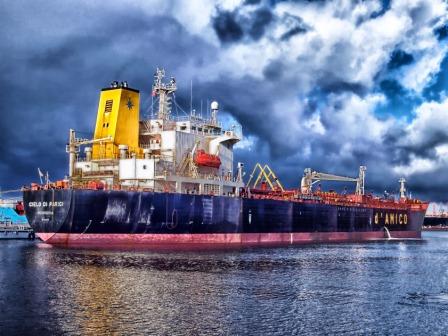Nobody on board a ship plans a collision or grounding but if this occurs – we must be prepared and take action to minimise the loss of life, property and environment.
No precise set of actions can be laid down for such a situation though certain general rules are applicable.
1)Sound general emergency stations.
2)Stop main engines in most cases. Circumstances may indicate that if one ship is embedded in another, it is desirable to maintain a few revolutions on the engines, since a rapid withdrawal from a gashed hull could leave a massive hole, which would allow the passage of considerable water. This could result in the immediate sinking of the stricken ship. While one ship is embedded in the other, it is acting as a plug and slowing the ingress of water through the area of damage.
3)Close all watertight and fire doors and start bilge pumps in affected areas.
4)Assess the extent of the damage, as follows:
(i) By visual inspection of the area of impact. Estimate volume of water inside the ship, the rate of water entering the ship due to the damage.
(ii) By estimating size of the damaged area and its position in relation to the water line. There may be temporary solutions, for example a Collision patch.
(iii) By stability assessment. If cargo is affected, check the permeability and the subsequent loss of buoyancy, together with change in trim. Assess immediate effect on GM and the continued effect on GM.
(iv) Consider additional factors, such as the risk of fire, gas or toxic fumes in the vicinity of the two ships; or the possibility of explosion resulting from withdrawal from the other ship.
(v) Check for casualties or missing persons aboard your own ship.
- Establish communications and see that emergency procedures are operated, as follows:
(a) Damage control party mustered at the incident scene.
(b) Emergency generator activated if required.
(c) Pumping arrangement set to gain maximum efficiency, with possible use of ballast pump instead of bilge pump.
(d) Engine room facilities kept on standby.
(e) Position on chart established and safe port options investigated.
- The master of every ship colliding with another is obliged to provide the other ship with the following particulars:
(a) The name of his ship.
(b) The port of registry of his ship.
(c) The port of departure.
(d) The port of destination.
The master is further obliged to render all possible assistance to the other ship.
- Depending on the amount of damage and general circumstances, it must be assumed that at some stage a decision to abandon or not to abandon will be taken.
- Many variable factors will come into play over the period from impact up to the time that any decision is taken to abandon the ship. These should be given full consideration when deciding any course of action:
(a) The weather conditions at the time and in the future.
(b) The expected time that the ship will stay afloat when taking in water.
(c) The risk to personnel from fire or explosion by remaining aboard.
(d) The odds of saving the ship by beaching or steaming into shallow waters.
- Assuming that the ship remains afloat, efforts should be made to prevent any increase in damage or further flooding. Should the ship still be capable of maneuvering, then she should do so under the correct signals, either NUC or International Code Flags.
Any oil leakages should be reported in accordance with the Pollution Convention requirements regarding notification.





NC flag Novomber and charli flag together used in case of collision
What international flags to b used in case of collision